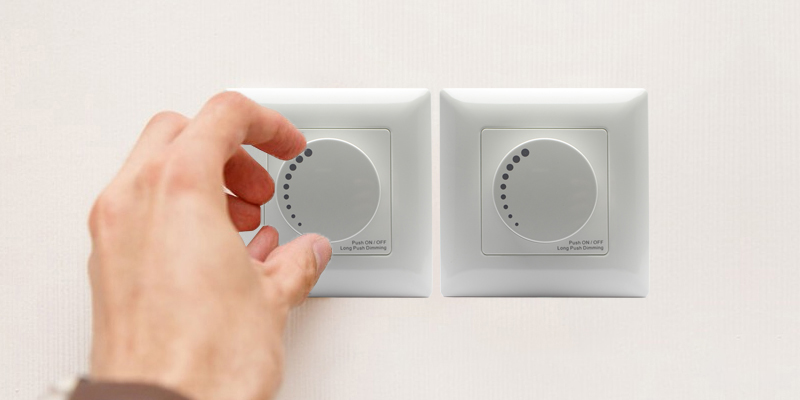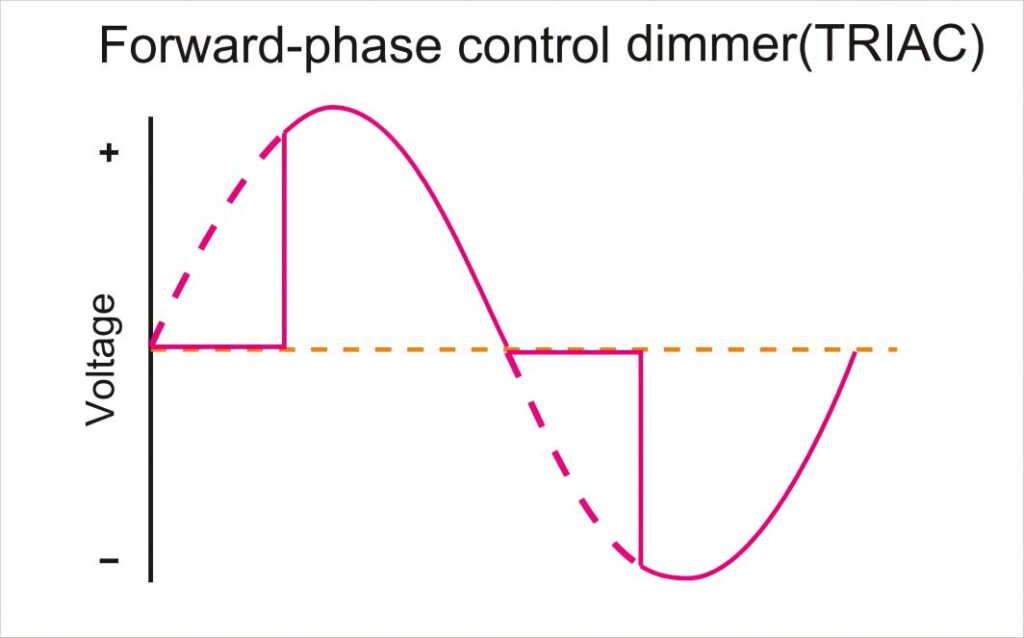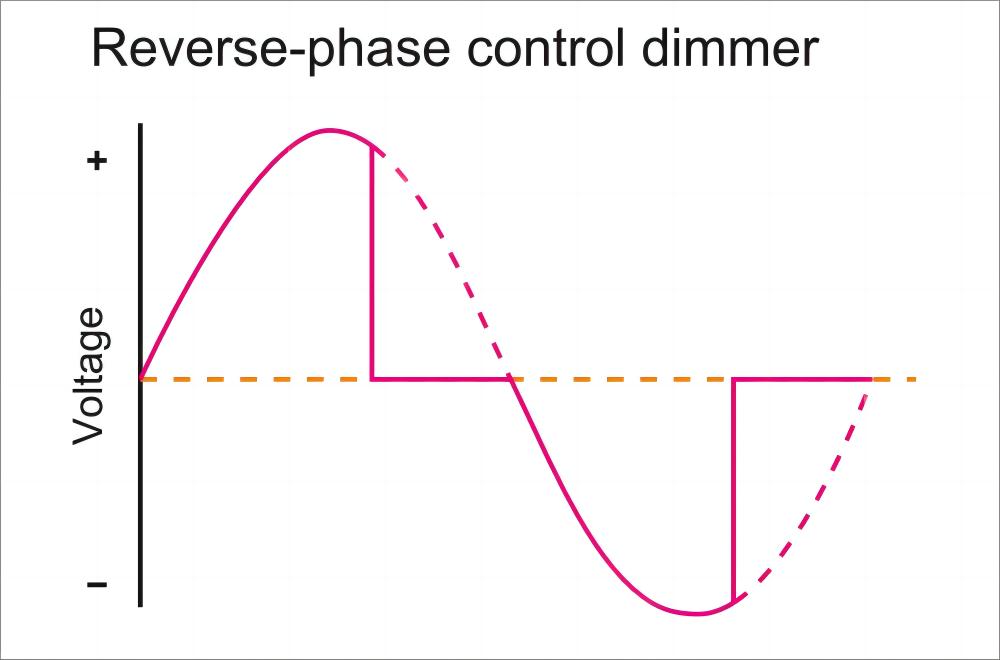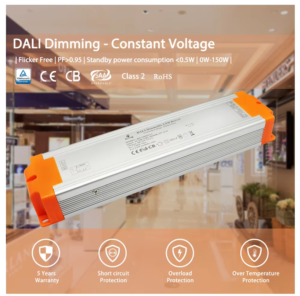Introduction
As lighting technology evolves, the ability to control brightness levels has become essential in both residential and commercial spaces. Dimmers allow for flexible lighting control, helping set the desired ambiance and promoting energy efficiency. One of the most popular types of dimmers is the Variateur TRIAC. Known for its affordability, simplicity, and compatibility with traditional light sources, TRIAC dimmers are ideal for a range of settings.

In this comprehensive guide, we’ll explain what a TRIAC dimmer is, how it works, and how it compares to other dimming technologies. By the end, you’ll know the benefits and limitations of TRIAC dimmers and whether they’re suitable for your lighting needs.
A TRIAC dimmer is a type of phase-cut dimmer that controls lighting brightness by modulating the power sent to the light. "TRIAC" stands for "Triode for Alternating Current," a semiconductor ideal for alternating current (AC) circuits, as it regulates current in both directions, making it a popular choice for residential and commercial dimming.
Qu'est-ce qu'un variateur TRIAC ?
A Variateur TRIAC (short for "Triode for Alternating Current") is an electronic device used to control light intensity by adjusting the power sent to the light. TRIAC dimmers are a form of phase-cut dimming technology, where sections of the AC (alternating current) waveform are cut to reduce the energy supplied to the light, thus controlling brightness.

Unlike resistive dimmers, which simply reduce power by adding resistance to the circuit, TRIAC dimmers work by quickly turning the power on and off at different points within each AC cycle. By controlling when power flows to the light, they effectively modulate brightness without wasting as much energy. TRIACs have become standard for many residential and small commercial dimming applications, particularly for incandescent and halogen lighting.
Components of a TRIAC Dimmer
TRIAC dimmers typically consist of several core components:
- Thyristor (TRIAC): The key component that controls power flow, effectively acting as an on-off switch within the circuit.
- Capacitors: These regulate timing within the circuit to determine when power should flow.
- Potentiometer: This component controls resistance, which in turn adjusts brightness levels by setting the point within the AC cycle at which power is delivered.

Together, these components allow the TRIAC dimmer to create variable light levels in an energy-efficient way.
Comment fonctionne un variateur TRIAC ?
TRIAC dimmers work using phase-cutting technology. Here’s how they control brightness in detail:
- AC Cycle: In an alternating current (AC) circuit, the voltage waveform cycles between positive and negative phases 60 times per second (in North America) or 50 times per second (in Europe). This constant fluctuation provides the basis for TRIAC dimming.
- Phase-Cutting: Instead of delivering a continuous flow of electricity, the TRIAC dimmer "chops" sections of the AC waveform. By cutting off sections of the wave, it controls the amount of power reaching the light, thereby dimming it.
- Leading-Edge Dimming: Most TRIAC dimmers employ leading-edge dimming. This means they turn off the power at the beginning of each AC cycle and turn it back on at a point determined by the user’s dimming setting. The more the waveform is cut off, the dimmer the light becomes.

Types of TRIAC Dimmer Switches
TRIAC dimmers come in various designs tailored to different use cases:
- Rotary Dimmers: Common in residential settings, these dimmers use a knob to control brightness.
- Slide Dimmers: These have a sliding switch to adjust light levels, often used in homes and offices.
- Variateurs intelligents: Controlled via smartphones or home automation systems, they integrate with smart home setups for added convenience.
- Remote Dimmers: Operated with wireless remotes, ideal for larger rooms or settings where remote access is desired.
Each type offers a unique user experience, though all operate on the same underlying TRIAC technology.
Applications of TRIAC Dimmers
TRIAC dimmers are versatile and suited for various lighting applications, including:
- Residential Spaces: TRIAC dimmers are popular in homes for creating comfortable lighting in living rooms, dining rooms, and bedrooms. They allow homeowners to control ambiance, making spaces feel more relaxing or energizing as needed.
- Espaces commerciaux: In settings like restaurants, retail stores, and hotels, TRIAC dimmers enable customized lighting to suit different times of day or events. By adjusting the brightness levels, business owners can save on energy costs and provide a welcoming environment for customers.
- Industrial Applications: While less common in industrial environments, TRIAC dimmers can be used in warehouses, workshops, and factories to control lighting, improve visibility, and reduce energy consumption.
- Lieux de divertissement: TRIAC dimmers are also found in theaters, auditoriums, and other entertainment spaces where precise lighting control is needed to set the mood.
Un variateur Lutron est-il un variateur TRIAC ?
Lutron is a well-known brand that offers a wide variety of dimmers, many of which are TRIAC-based. Models like the PD-6WCL et PD-10NXD utilize TRIAC technology for compatibility with incandescent and halogen bulbs. Lutron dimmers are known for their reliability and ease of installation, and they integrate seamlessly into both residential and commercial lighting systems.
Lutron also produces dimmers compatible with LEDs, but it’s important to note that not all TRIAC dimmers work well with LEDs due to differences in power requirements. Always check the compatibility of a specific Lutron dimmer with the type of lighting you intend to use.
What is the Difference Between a TRIAC Dimmer and an ELV Dimmer?
ELV (Electronic Low Voltage) dimmers are another type of dimmer that works through reverse-phase dimming. Unlike TRIAC dimmers, which cut power at the beginning of the AC cycle, ELV dimmers cut power at the end of each cycle. This approach results in smoother light transitions and less wear on LED drivers, making ELV dimmers more compatible with LEDs.
- Variateur TRIAC: Best suited for incandescent and halogen lighting, with lower cost and simpler technology.
- ELV Dimmer: Ideal for LED lighting, providing smooth dimming, reduced power surges, and increased efficiency.
While ELV dimmers offer advantages for LED setups, TRIAC dimmers remain popular for traditional lighting types due to their cost-effectiveness and reliability.
Is a TRIAC Dimmer Leading or Trailing Edge?
TRIAC dimmers are almost always leading-edge dimmers. In leading-edge dimming, the dimmer cuts off the power at the start of the AC waveform. This method delivers a rush of current, suitable for incandescent and halogen bulbs that can withstand these surges.
For LED lighting, however, this surge can lead to flickering, reduced lifespan, or suboptimal dimming performance. LEDs work best with trailing-edge or reverse-phase dimming, as provided by ELV dimmers, so compatibility should always be confirmed.


How to Identify if a Dimmer is TRIAC
To determine if a dimmer is TRIAC-based, look for the following indicators:
- Product Labeling: Many manufacturers indicate “TRIAC” or “leading-edge” on the packaging.
- Compatibility Information: Product specifications often specify compatible lighting types; TRIAC dimmers will usually list incandescent or halogen lights and may specify LED compatibility.
- Physical Characteristics: TRIAC dimmers are often designed for knob or slide operation, typical of traditional dimming setups.
- Technical Specifications: Check for terms like "phase-cut" or "leading-edge" in online product descriptions or manuals.
Benefits of TRIAC Dimmers
TRIAC dimmers offer several distinct advantages:
- Affordability: TRIAC dimmers are generally more cost-effective than other dimming technologies, making them accessible for various budgets.
- Ease of Use: They’re easy to install and operate, making them suitable for both DIY enthusiasts and professionals.
- Wide Compatibility: TRIAC dimmers work well with incandescent and halogen lights, providing smooth dimming for traditional lighting setups.
Drawbacks of TRIAC Dimmers
Despite their benefits, TRIAC dimmers have limitations, particularly when used with LED lighting:
- Noise: Some TRIAC dimmers produce a slight buzzing or humming sound, especially when dimming to low levels.
- Compatibility Issues: TRIAC dimmers are not universally compatible with all LEDs, leading to possible flickering or limited dimming.
- Reduced Energy Efficiency: While efficient with incandescent lights, TRIAC dimming isn’t as energy-efficient with LEDs compared to other methods like ELV or PWM.
Comparaison avec d'autres technologies de gradation
TRIAC dimming is just one option in the market. Here’s how it compares to other popular methods:
- PWM (Pulse Width Modulation): Common in LED lighting, PWM dimming adjusts brightness by rapidly switching the light on and off, maintaining smooth transitions and high efficiency.
- Gradation 0-10V: Frequently used in commercial spaces, 0-10V dimming provides steady dimming control for LED and fluorescent lights.
- Digital Control Systems (DALI, DMX): Advanced systems like DALI (Digital Addressable Lighting Interface) and DMX allow complex lighting control, commonly used in large-scale commercial, industrial, and entertainment settings.
Advanced Lighting Systems: DALI and DMX
DALI et DMX are digital lighting control systems suited for larger installations or where precise, programmable lighting is required. They offer more advanced control than TRIAC dimming, enabling users to control numerous fixtures, adjust colors, and create specific lighting scenes.
While these systems are more expensive and complex, they’re ideal for spaces like theaters, malls, and high-end residential projects.
Choosing the Right Dimmer for Your Needs
Selecting the appropriate dimmer depends on lighting type, budget, and space. Here’s a quick guide:
- Incandescent and Halogen Lights: Use a TRIAC dimmer for affordability and ease of use.
- LED Lighting: Opt for an ELV or LED-specific TRIAC dimmer to prevent compatibility issues.
- Complex Installations: Consider DALI or DMX systems for advanced, programmable control.
Consulting a professional can also ensure compatibility with your lighting type and energy goals.
Future Trends in Dimming Technology
With the rise of smart homes et IoT technology, dimming systems are evolving rapidly. Smart dimmers allow remote and programmable control, integrating with home automation systems. While TRIAC dimming remains popular, digital control systems and app-based dimming will likely shape the future of lighting.
Conclusion
TRIAC dimmers are an affordable, user-friendly solution for controlling lighting in homes and small businesses. They offer flexibility, energy savings, and compatibility with many traditional lighting types. However, as LED technology and smart home integration advance, users may consider alternative dimming solutions for better efficiency and adaptability.






